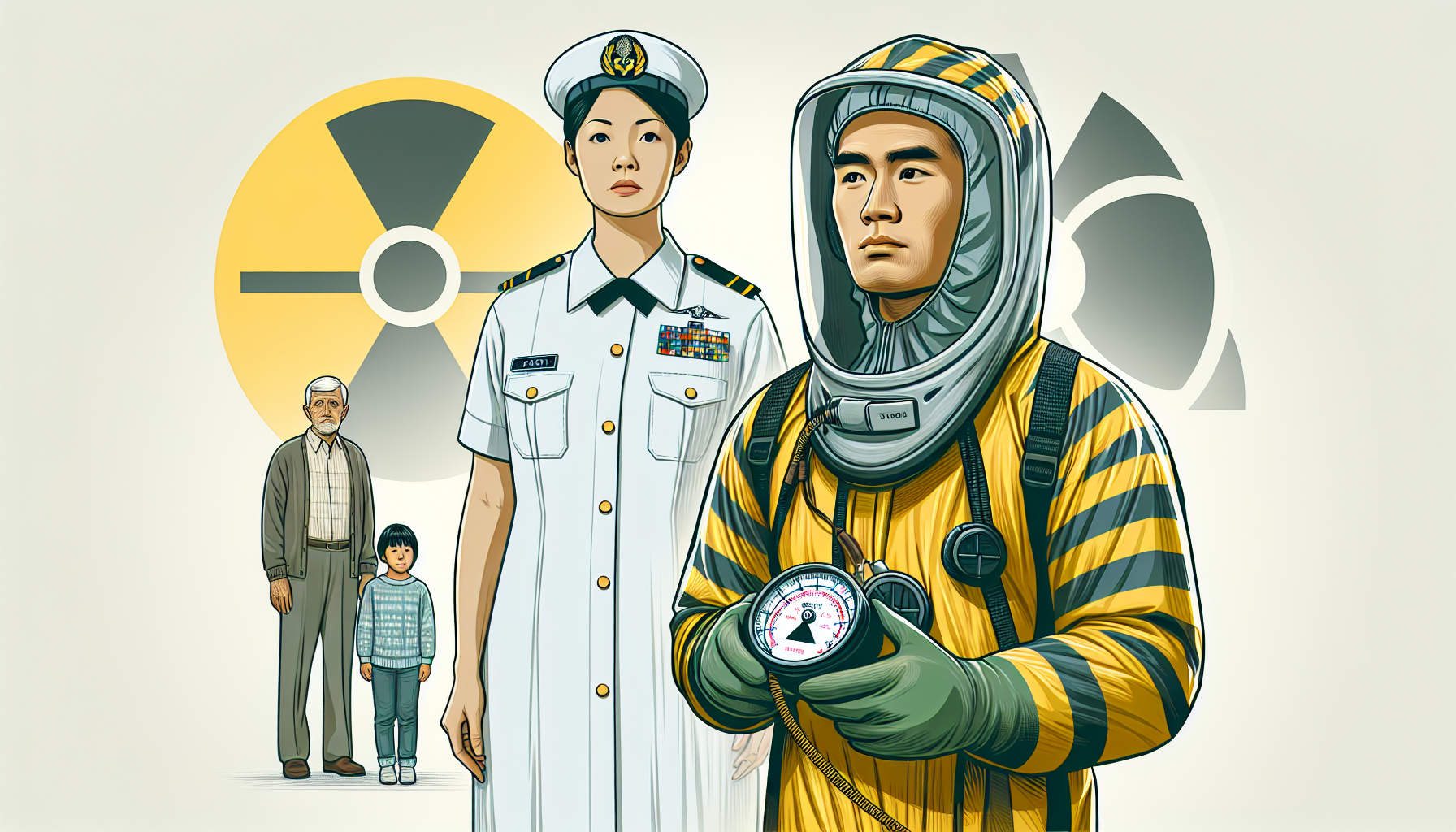Definition
Acute radiation syndrome (ARS) refers to a range of symptoms and health effects that result from exposure to high levels of ionizing radiation over a short period of time. This syndrome primarily affects the gastrointestinal, bone marrow, and cardiovascular/central nervous systems. ARS can cause a wide array of symptoms, including nausea, vomiting, diarrhea, skin damage, and can ultimately lead to death if left untreated.
Key Takeaways
- Acute radiation syndrome (ARS) is a serious medical condition caused by high levels of ionizing radiation exposure, often experienced by those in the vicinity of nuclear accidents, explosions, or other intense radiation sources.
- ARS symptoms vary depending on the severity of exposure and may include nausea, vomiting, fatigue, skin burns, and increased risk of infections. In extreme cases, it can lead to organ failure and ultimately death.
- Military operations could encounter the risks of ARS during nuclear warfare, nuclear accidents, or while dealing with radioactive materials. Troops are trained on how to mitigate the risks and protect themselves in such scenarios.
Importance
Acute Radiation Syndrome (ARS) is an important term within military operations, as it refers to the adverse health effects experienced by individuals exposed to high doses of ionizing radiation over a short period.
In the context of military operations, ARS becomes crucial, as ionizing radiation sources include nuclear weapons, dirty bombs, and nuclear reactor accidents, all of which are potential threats in modern war scenarios.
Understanding and recognizing ARS is vital for the military to promptly diagnose, treat and manage affected soldiers and civilians, and to implement effective safety measures, medical support, and decontamination procedures.
Furthermore, raising awareness of ARS and its impacts is essential in developing preparedness strategies and training, which ultimately contributes to the success, safety, and resilience of military forces during warfare and emergency situations.
Explanation
Acute radiation syndrome (ARS), also known as radiation sickness, plays a critical role in military operations when understanding and managing the potential consequences of exposure to ionizing radiation. This knowledge is essential in situations where military personnel may be exposed to nuclear weapons, accidents involving nuclear power plants, or potential radiological dispersal devices (often referred to as “dirty bombs”). By understanding ARS and its various stages and symptoms, military leaders can better prepare and train their forces to recognize the signs of radiation exposure, implement appropriate protective measures, and respond effectively to mitigate the health risks associated with ionizing radiation.
The proper comprehension and management of ARS serve as the basis for crucial decision-making in military operations concerning medical triage, personnel decontamination, and overall mission effectiveness. A key aspect of this understanding involves recognizing the varying degrees of ARS severity, which depend on the absorbed radiation dose, the duration of exposure, and the type of ionizing radiation.
Through proper training, military personnel can be educated on the use of specialized equipment, such as dosimeters, that monitor and analyze radiation levels during operations. In addition, medical teams can be equipped with the necessary knowledge and supplies to treat ARS symptoms, helping to minimize casualties and maintain operational capabilities.
In summary, understanding and preparing for potential ARS exposure is crucial for the modern-day military and directly contributes to the overall success and safety of its personnel during mission-critical situations.
Examples of Acute radiation syndrome
Acute Radiation Syndrome (ARS), also known as radiation sickness, occurs when an individual is exposed to high levels of ionizing radiation in a short period. This is often seen in military operations when nuclear weapons or materials are involved. Here are three real-world examples:
The Atomic Bombings of Hiroshima and Nagasaki (1945): During World War II, the United States dropped atomic bombs on the Japanese cities of Hiroshima and Nagasaki, leading to mass death and destruction. Many of the survivors experienced acute radiation syndrome, initially suffering from nausea, vomiting, and diarrhea, followed by fever and a weakened immune system due to the high dose of ionizing radiation they were exposed to during the bombings.
The Chernobyl Disaster (1986): The explosion and subsequent meltdown of Reactor 4 at the Chernobyl Nuclear Power Plant in Ukraine exposed many first responders and cleanup workers to high levels of ionizing radiation. As a result, many of these individuals developed acute radiation syndrome. Symptoms varied in severity depending upon the individual’s proximity to the reactor and the amount of time spent in the contaminated area.
The Fukushima Daiichi Nuclear Disaster (2011): In the wake of a powerful earthquake and tsunami in Japan, the Fukushima Daiichi Nuclear Power Plant experienced multiple reactor meltdowns and the release of radioactive materials. Several workers at the plant were exposed to high levels of ionizing radiation, leading to cases of acute radiation syndrome. These workers experienced symptoms such as nausea, vomiting, and burns, which later could develop into more serious health issues like organ failure and an increased risk of cancer.
FAQs on Acute Radiation Syndrome
What is Acute Radiation Syndrome?
Acute Radiation Syndrome (ARS) is a serious medical condition that occurs when an individual is exposed to a high dose of ionizing radiation over a short period. It can be caused by incidents such as radiation accidents at nuclear facilities, malicious acts involving radioactive materials, or detonation of a nuclear weapon.
What are the symptoms of Acute Radiation Syndrome?
Symptoms of ARS may vary depending on the radiation dose and duration of exposure. Common symptoms include nausea, vomiting, diarrhea, fatigue, skin burns or redness, hair loss, and increased susceptibility to infections. In severe cases, it can also lead to organ failure, cardiovascular problems, and death.
How is Acute Radiation Syndrome diagnosed?
ARS is diagnosed based on an individual’s history of exposure to ionizing radiation, clinical symptoms, and specific laboratory tests. The severity of the condition is assessed by estimating the dose of radiation exposure, analyzing changes in blood cell counts, and performing imaging tests to evaluate organ damage.
What is the treatment for Acute Radiation Syndrome?
The treatment for ARS primarily involves managing the symptoms and preventing complications. Depending on the severity, treatment may include supportive care, medications to alleviate symptoms, antibiotics to prevent infections, blood transfusions, and potentially bone marrow transplantation. In cases of exposure to radioactive materials, decontamination procedures may be necessary to prevent further harm.
How can I protect myself from radiation exposure?
If you live near a potential source of ionizing radiation, such as a nuclear plant, it’s important to be prepared for emergencies and stay informed about official instructions. In case of an accident or radioactive release, take appropriate actions such as evacuating, finding shelter, or taking potassium iodide (KI) tablets if advised by authorities. Limit your exposure by following the principles of time, distance, and shielding — reducing the time in a radioactive environment, increasing the distance from the source, and placing barriers between you and the source of ionizing radiation.
Related Military Operation Terms
- Radiation exposure
- Radiation sickness
- Radiation injury
- Radiation protection
- Nuclear accidents
Sources for More Information
- Centers for Disease Control and Prevention (CDC)
- World Health Organization (WHO)
- National Library of Medicine (NLM)
- U.S. Department of Energy (DOE)
 Benefits.com Advisors
Benefits.com Advisors
With expertise spanning local, state, and federal benefit programs, our team is dedicated to guiding individuals towards the perfect program tailored to their unique circumstances.
Rise to the top with Peak Benefits!
Join our Peak Benefits Newsletter for the latest news, resources, and offers on all things government benefits.




















